
Opinions
14:55, 11-Oct-2017
Opinion: Transformation of social structure buttresses China's rapid rise
By Jin Canrong from Global Times
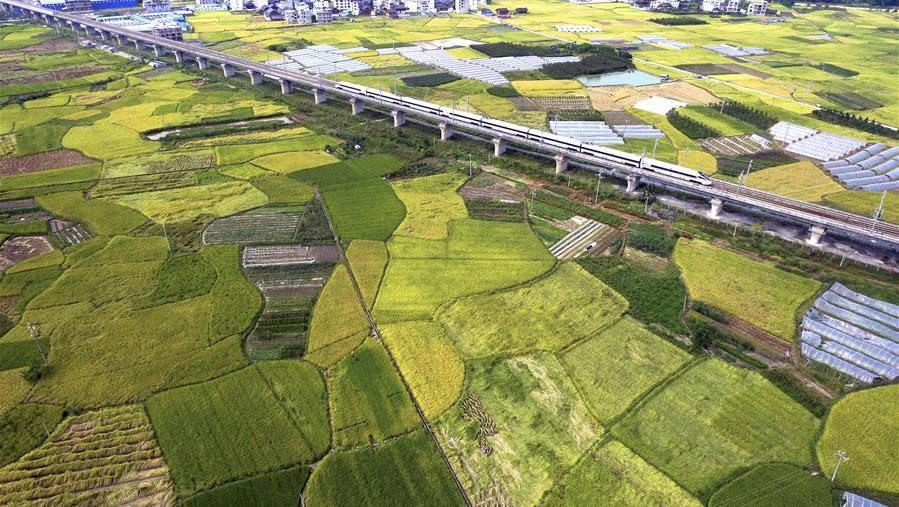
Academics around the world are interested in finding out how China made remarkable achievements since 1949, especially after reform and opening-up started in 1978.
The answer lies in comparing China's development experience with industrialization and modernization in Western countries.
Europe set an example to the world as it took the lead in promoting social transformation from pre-modern to modern society. This transformation consisted of three core processes: Renaissance, Reformation and Revolution.
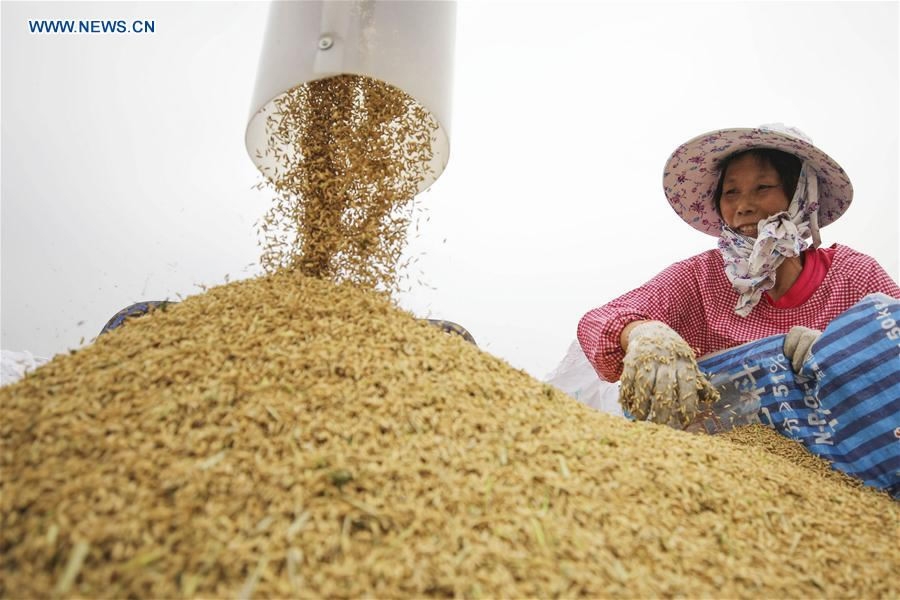
A farmer loads rice in Lianyungang, east China's Jiangsu Province, on October 10, 2017. /Xinhua Photo
A farmer loads rice in Lianyungang, east China's Jiangsu Province, on October 10, 2017. /Xinhua Photo
Before the Renaissance, Europe focused on fulfilling religious responsibilities. State rulers governed through religion. Renaissance and the subsequent Enlightenment Movement called on people to pursue their own happiness, which added a secular flavor to society.
Then came Reformation, which set a boundary between religion and secularism - religion should not intrude into social life.
Revolution followed. The French Revolution resulted in the abolition of privileges of noble birth.
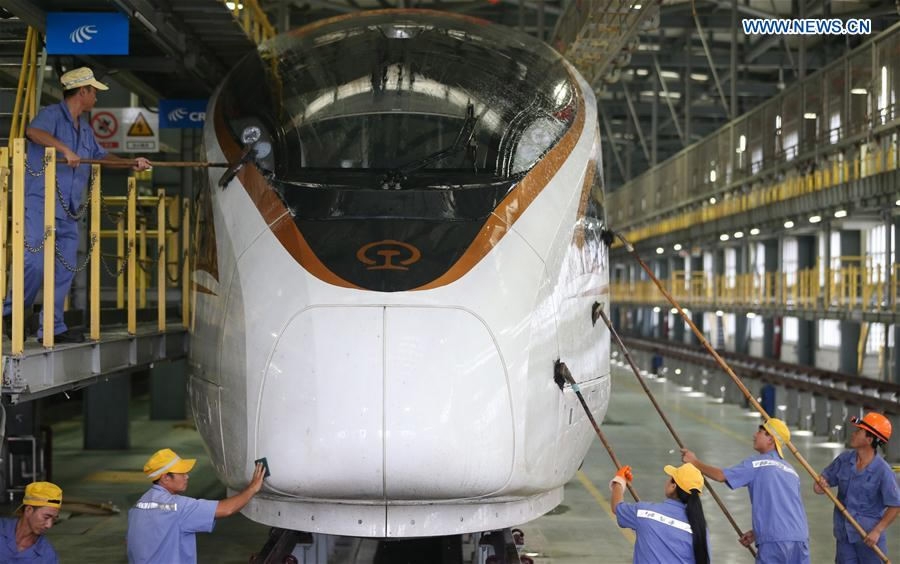
Workers clean a Fuxing bullet train at the Hongqiao bullet train base in Shanghai, east China, on October 2, 2017. /Xinhua Photo
Workers clean a Fuxing bullet train at the Hongqiao bullet train base in Shanghai, east China, on October 2, 2017. /Xinhua Photo
The completion of social transformation fueled industrialization featuring machine manufacturing and higher productivity. Western industrial strength dominated after industrialization and Western countries began to promote globalization around the world.
China is probably the only country that has finished the transformation of social structure in the non-Western world.
Chinese culture has always been open and inclusive of the world. Agrarian society dominated ancient China and horsemen took a back seat. However, the horse-mounted groups were used in military exchanges during the Spring and Autumn Period (770BC-476BC).
Then, "Wearing the Hu-styled (exotic) attire and shooting from horseback in battle" emerged during the reign of King Wuling of Zhao (325BC-299BC) during the Warring States period (475BC-221BC).
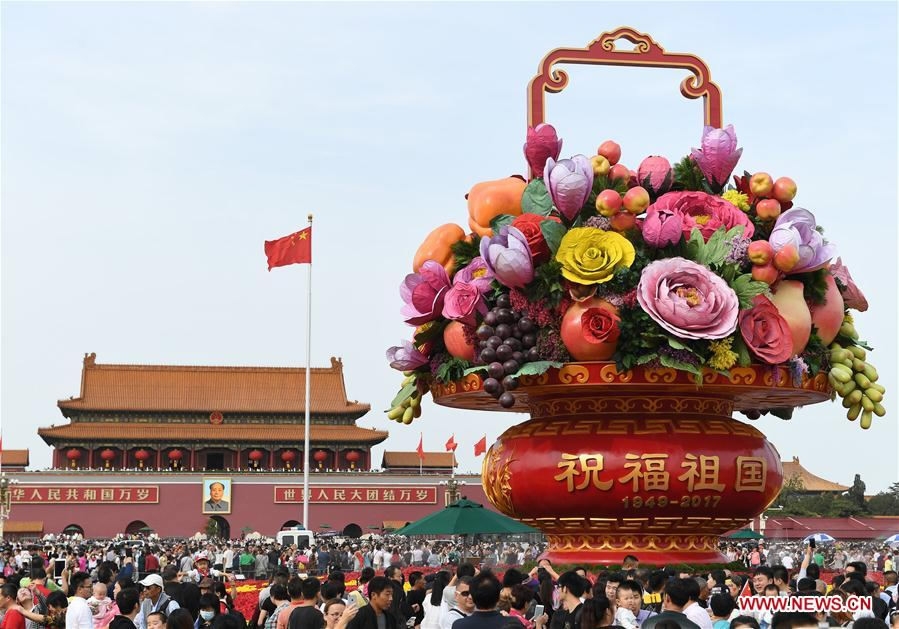
The main flower parterre at Tiananmen Square in central Beijing, on October 1, 2017. /Xinhua Photo
The main flower parterre at Tiananmen Square in central Beijing, on October 1, 2017. /Xinhua Photo
In addition, Buddhism was embraced by the ancient Chinese and fitted into Chinese culture where some prominent schools of thought, such as Confucianism, Legalism and Taoism, had been acknowledged by the masses. The integration of Buddhism into Chinese culture helped maintain social function.
Since the beginning of modern Chinese history in 1840, Chinese people have witnessed the large-scale import of Western values.
Advanced technologies were brought into China during the late Qing Dynasty (1644-1911), political and social system during the Republic of China (1912-49) and the introduction of Marxism since the founding of the People's Republic of China.
China has also drawn on the development experience of the West after the opening-up. Based on that, Chinese culture has successfully gone through the Renaissance.

A man harvests apples in Dancheng County, east China's Shandong Province, on October 10, 2017. /Xinhua Photo
A man harvests apples in Dancheng County, east China's Shandong Province, on October 10, 2017. /Xinhua Photo
As for the Reformation, Chinese culture has relinquished feudalism namely, the Three Cardinal Guides - ruler guides subject, father guides son and husband guides wife, and Five Constant Virtues - benevolence, righteousness, propriety, knowledge and sincerity, which is similar to the European religious reformation.
Considering the Revolution, China has built a brand new social structure and introduced democracy among the people through several waves of revolution.
Social transformation underpins the burgeoning industrialization in China. China's industrialization has made amazing strides. For example, China's manufacturing scale rose to 160% of the US in 2016, with an output totaling the manufacturing output of Japan, Germany and the US.
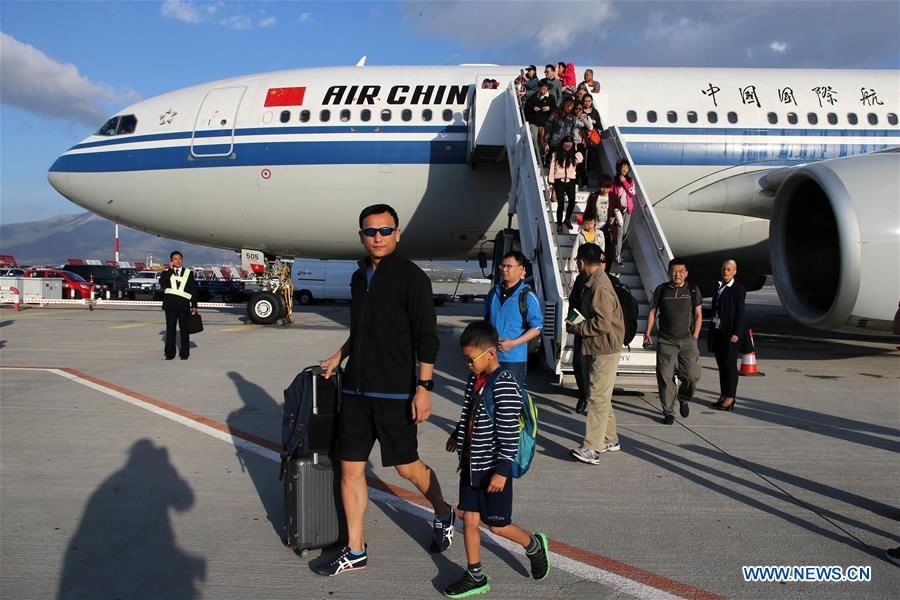
Chinese passengers disembark from an Air China Airbus at Athens International Airport in Athens, Greece, on September 30, 2017. /Xinhua Photo
Chinese passengers disembark from an Air China Airbus at Athens International Airport in Athens, Greece, on September 30, 2017. /Xinhua Photo
This gap is widening and China's manufacturing sector will surpass the total manufacturing output of Japan, the EU and the US in 10 years.
After two decades, the world will likely see the rise of two "countries" in terms of manufacturing growth - China and the rest of the world. China's manufacturing sector will outstrip that of the other countries combined.
China has developed a robust industrial system. In April 2017, a report from Goldman Sachs said that Shenzhen has outperformed the Silicon Valley in the transformation of research outcomes into commercial products. The US led technological innovation in the last 30 years, but suffered lower productivity because of outsourcing industry.
Industrialization in other non-Western countries advanced via colonialism and force. For instance, India was under British colonial rule for about 100 years.
Although India became independent in 1947, it failed to launch Revolution or Reformation, or complete the transformation of its social structure. Up to now, India is still in the pre-modern phase. Despite some modernization, India is somewhat incapable of taking its own industrialization to a higher level.
China has a growing interest in globalization and global governance after making inroads into industrialization. China proposed its own solutions to global issues during the G20 Hangzhou Summit last year and thereafter. China's modernization is in full swing.
(This piece was originally published on Global Times. The author is the vice director of the School of International Studies at Renmin University of China. The article reflects the author's opinion, and not necessarily the views of CGTN.)
Source(s): Global Times

SITEMAP
Copyright © 2018 CGTN. Beijing ICP prepared NO.16065310-3
Copyright © 2018 CGTN. Beijing ICP prepared NO.16065310-3